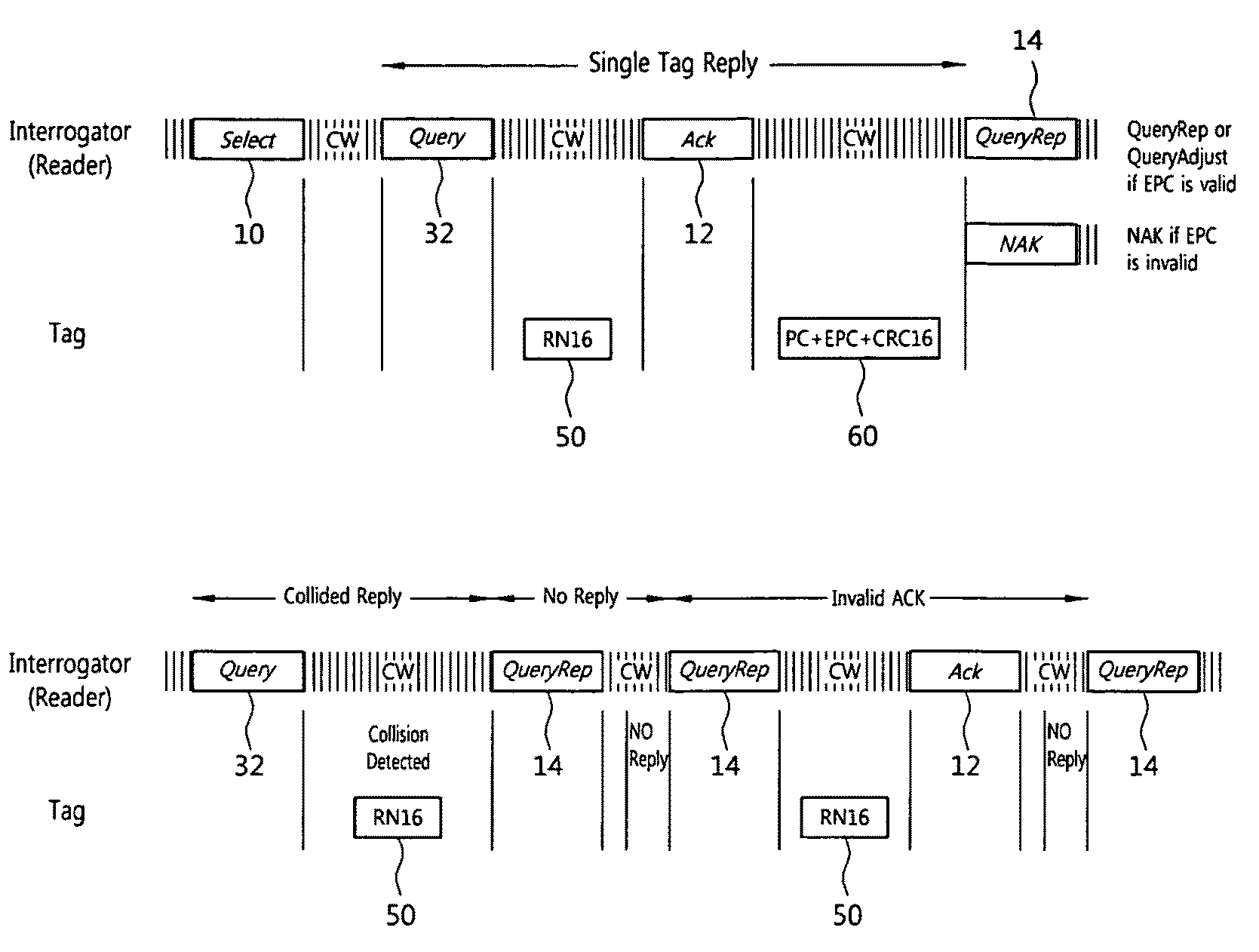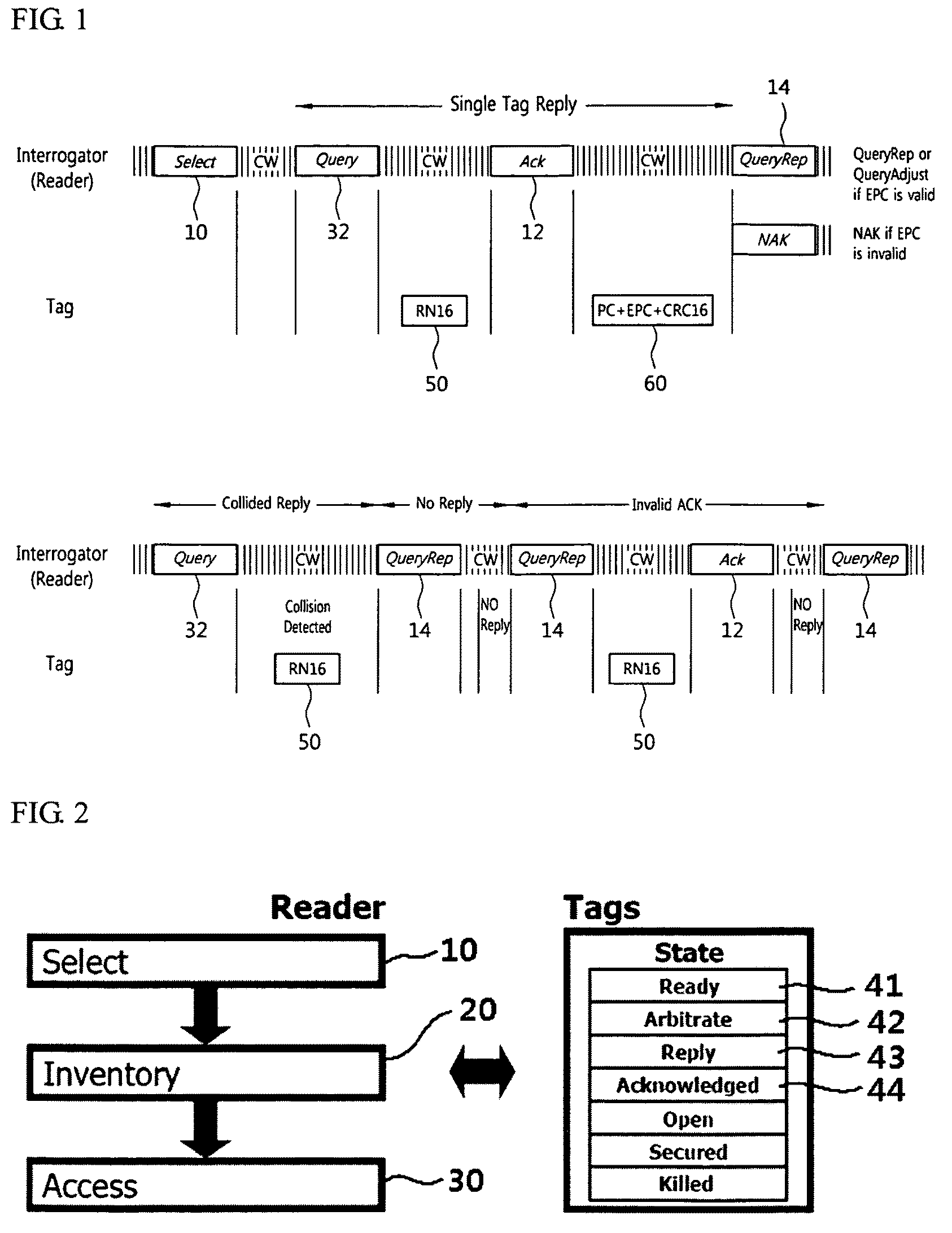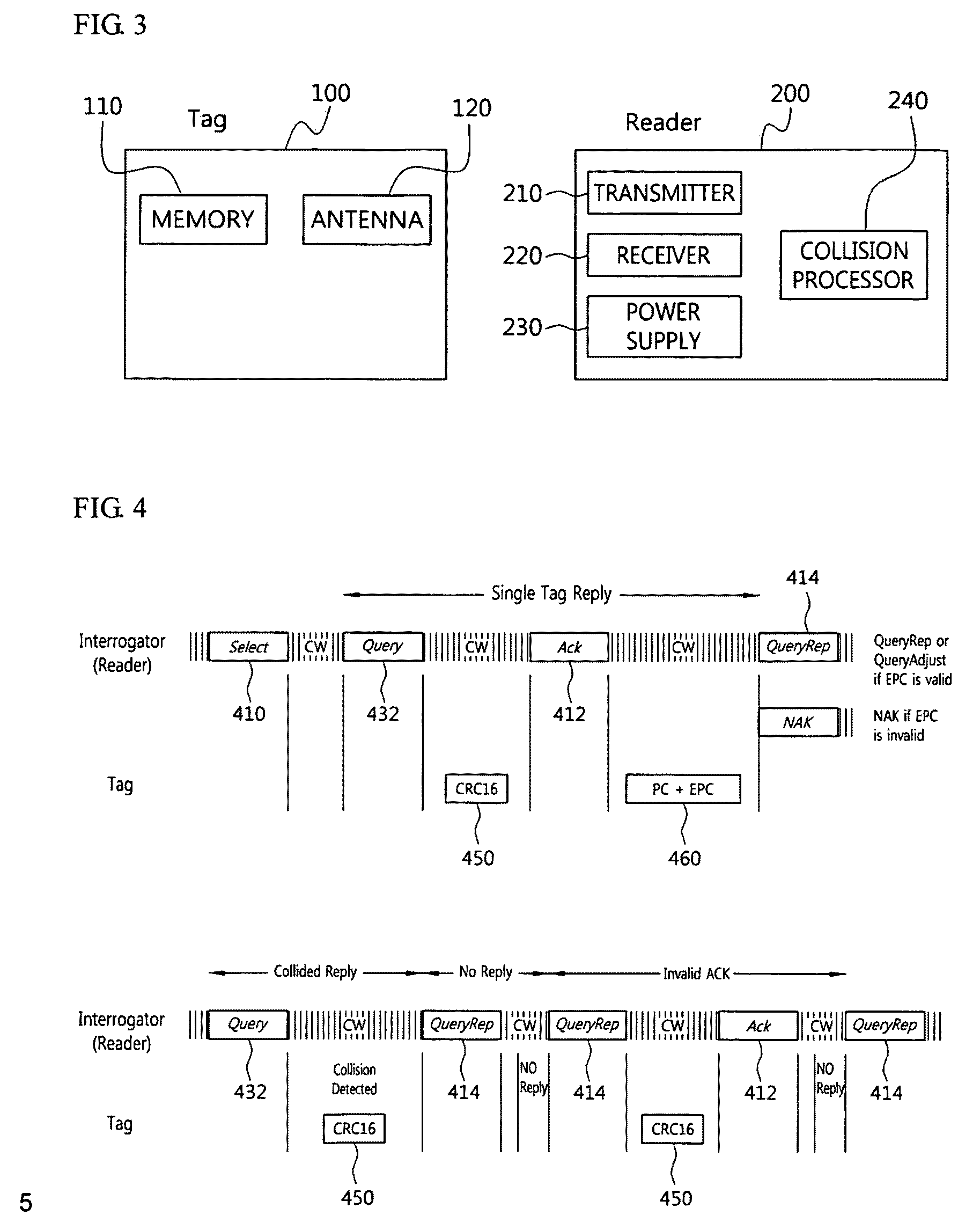Methods of identifying RFID tag for preventing RFID tag collision, RFID reader and RFID tag using the same
- Summary
- Abstract
- Description
- Claims
- Application Information
AI Technical Summary
Benefits of technology
Problems solved by technology
Method used
Image
Examples
Embodiment Construction
[0042]Various example embodiments of the present invention will now be described more fully with reference to the accompanying drawings, in which some example embodiments of the invention are shown. However, specific structural and functional details disclosed herein are merely representative, for purposes of describing example embodiments of the present invention. This invention may be embodied in many alternate forms and should not be construed as limited to only the embodiments set forth herein. The scope of the invention is intended to cover all modifications, equivalents, and alternatives falling within the scope of the appended claims. Like numerals refer to like elements throughout the description and drawings.
[0043]A method of identifying a tag according to an example embodiment of the present invention uses a code, for example, a cyclic redundancy check (CRC)-16 code, functioning similar to a random number with 16 bits (RN16) code, instead of the RN16 code generated before ...
PUM
 Login to View More
Login to View More Abstract
Description
Claims
Application Information
 Login to View More
Login to View More - R&D
- Intellectual Property
- Life Sciences
- Materials
- Tech Scout
- Unparalleled Data Quality
- Higher Quality Content
- 60% Fewer Hallucinations
Browse by: Latest US Patents, China's latest patents, Technical Efficacy Thesaurus, Application Domain, Technology Topic, Popular Technical Reports.
© 2025 PatSnap. All rights reserved.Legal|Privacy policy|Modern Slavery Act Transparency Statement|Sitemap|About US| Contact US: help@patsnap.com



